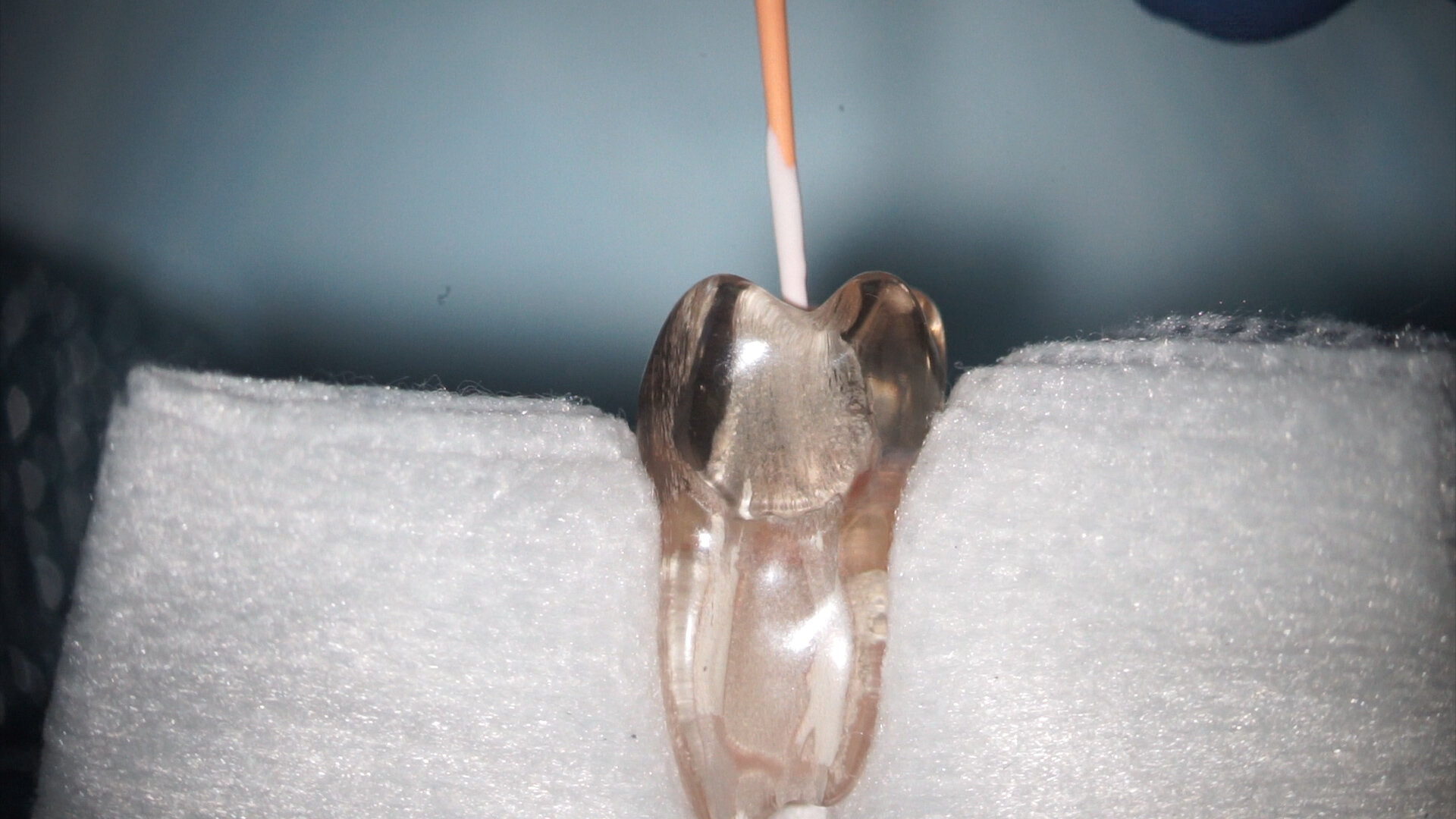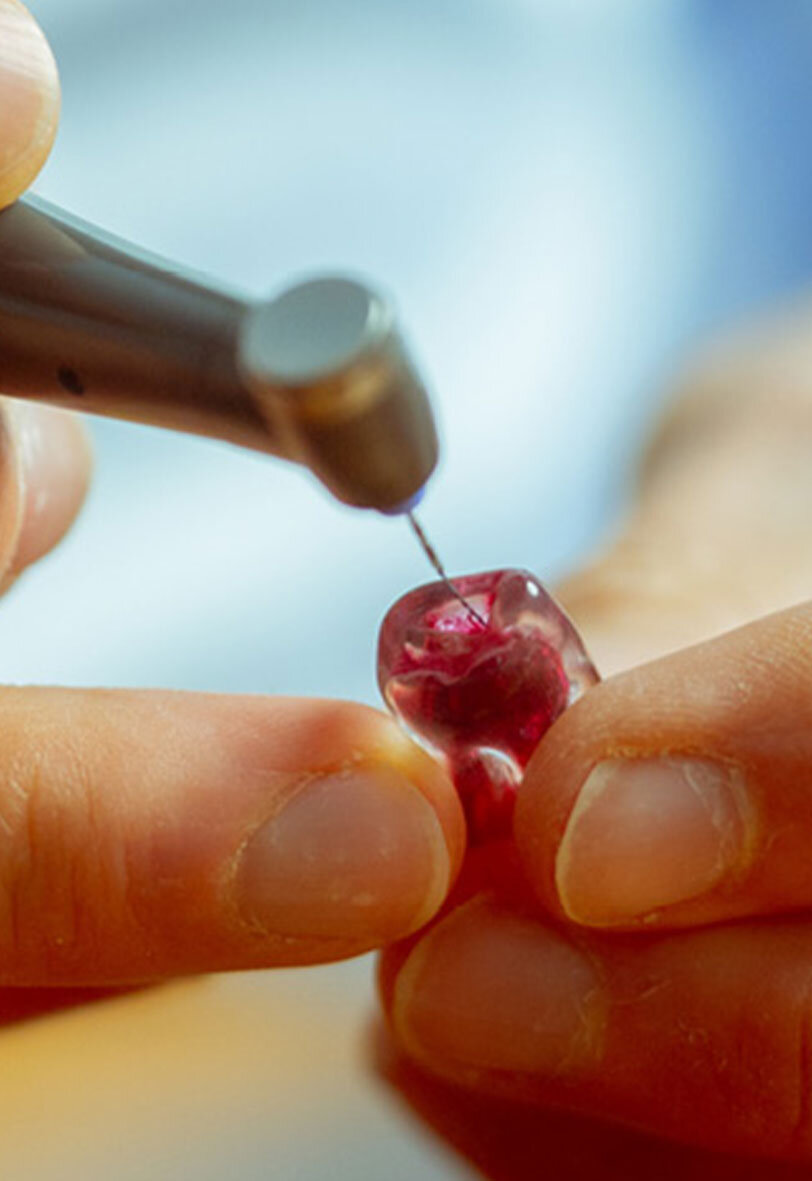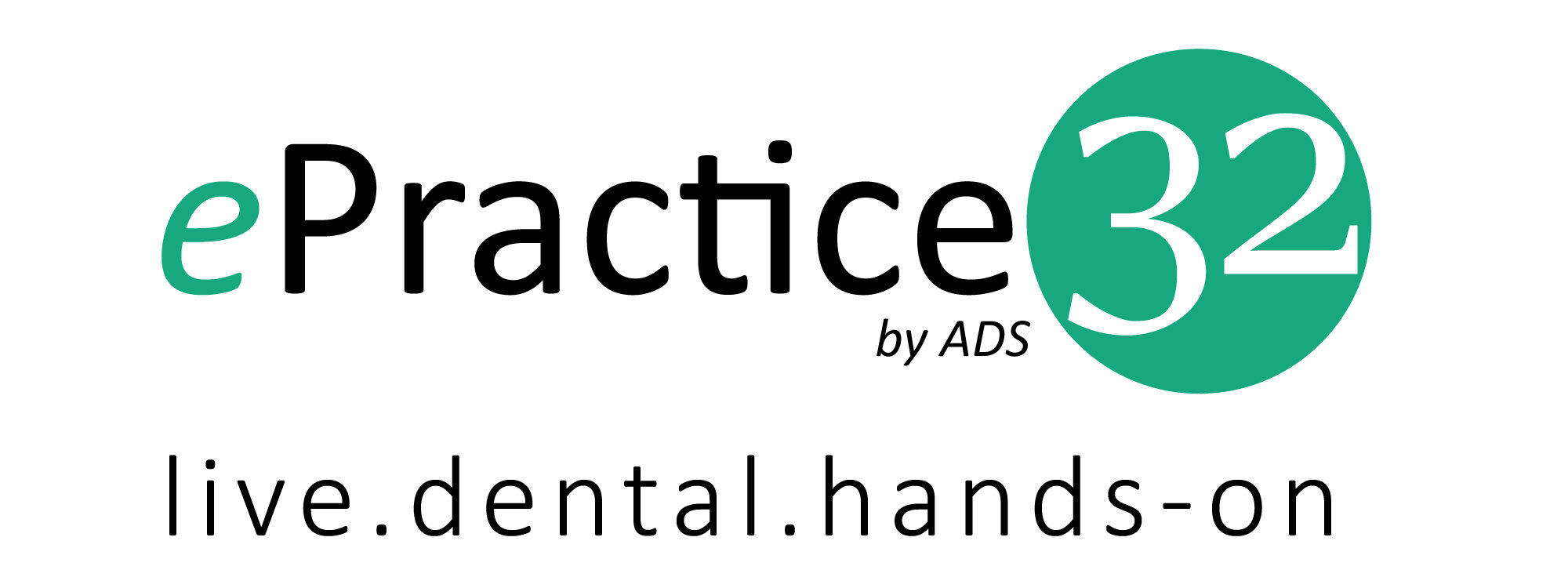Endodontie, 1/2025
Seiten: 7-13, Sprache: DeutschReymus, Marcel / Herbst, Sascha / Diegritz, ChristianIntraalveoläre Wurzelfrakturen gehören mit 0,5–7 % zu den eher seltenen traumatisch bedingten Zahnverletzungen. Ihre Diagnose ist oft eine Herausforderung, da sich die Fraktur auf den ersten klinischen Blick als Konkussion, Lockerung oder Dislokation darstellen kann. Umso wichtiger sind die radiologische Diagnostik und das Verständnis des genauen, meist schrägen Frakturverlaufs. Ist keine Kommunikation zwischen Frakturspalt und Sulkus nachweisbar und ist die Diastase des koronalen Fragments nur gering, besteht die Therapie in der Reposition und Schienung; eine initiale endodontische Intervention ist in diesen Fällen nicht notwendig. Insgesamt kann von einer sehr guten Überlebenschance derartig verletzter Zähne von ca. 80 % ausgegangen werden. Auf mögliche Komplikationen sollte bei den regelmäßigen Recalluntersuchungen geachtet werden, um rechtzeitig reagieren zu können.
Schlagwörter: dentale Traumatologie, traumatisch bedingte Zahnverletzung, intraalveoläre Wurzelfraktur, Diagnose, Therapie
Endodontie, 3/2024
Mitteilungen der GesellschaftenSeiten: 323-327, Sprache: DeutschDiegritz, Christian / Fleischer, FelixQuintessence International, 1/2020
DOI: 10.3290/j.qi.a43755, PubMed-ID: 31813942Seiten: 86-e11, Sprache: EnglischFotiadou, Christina / Frasheri, Iris / Reymus, Marcel / Diegritz, Christian / Kessler, Andreas / Manhart, Jürgen / Hickel, Reinhard / Klinke, Thomas / Heck, KatrinObjective: To compare the clinical performance of two glass-ionomer cements in combination with two light-cured coatings in Class II cavities.
Method and materials: In total, 43 Equia Fil/Equia Coat and 42 Fuji IX GP Fast/Fuji Coat LC restorations were placed, in 34 patients. Only Class II cavities with two- or three-surface restorations were included. The clinical performance was evaluated at baseline, after 1, 2, and 3 years using the FDI criteria. For the statistical analysis, Fisher exact test, Wilcoxon signed-rank test and Mann-Whitney U test were applied. The success and survival of the restorations were calculated with the Kaplan-Meier method and a log-rank test was used to detect significant differences between the tested materials.
Results: At the 3-year recall, no significant differences could be detected between the two glass-ionomer cements for any of the evaluated criteria (Mann-Whitney U test, P > .05). When comparing the baseline with the recall data at 3 years for each material separately, significant changes could be observed in both materials for the criteria "surface luster," "fracture of material and retention," and "approximal anatomical form" (Wilcoxon signed-rank test, P .05). Additionally, the Equia Fil restorations showed a notable change for the criteria "marginal adaptation" (Wilcoxon signed-rank test, P = .039). At the 3-year follow up, the Equia Fil and the Fuji IX GP Fast restorations exhibited an overall survival rate of 89.3% and 88.0%, respectively. Three fillings in each group failed.
Conclusion: The two glass-ionomer cements tested performed similarly in Class II cavities in adult patients, with a moderate failure rate after 3 years.
(Quintessence Int 2020;1:e1-e11; doi: 10.3290/j.qi.a43755. Original article published in Quintessence Int 2019;50:592-602; doi: 10.3290/j.qi.a42692)
Schlagwörter: amalgam alternatives, Class II restorations, clinical study, Equia, FDI criteria, glass-ionomer cement, permanent teeth
QZ - Quintessenz Zahntechnik, 1/2020
ErfahrungsberichtSeiten: 40-52, Sprache: DeutschSchwerin, Clemens / Schweiger, Josef / Meinen, John / Trimpl, Johannes / Diegritz, Christian / Schubert, OliverVom gefrästen Try-in zur vollkeramischen VersorgungDurch den Einsatz der Überpresstechnik bei implantatgetragenen Versorgungen sollten komplexe Arbeitsabläufe vereinfacht werden. Der Beitrag beschreibt einen ersten Konstruktions-Vorschlag, der gefräst wurde. Dieser Prototyp gab Aufschluss über die sinnvolle Position der Zähne. Die navigierte Implantatplanung baute auf dem Datensatz auf und bot so eine vorhersagbare Inserierung der Implantate. Eine Einprobe der mit rückstandsfrei ausbrennbaren Verblendschalen überzogenen Gerüste ließ eine funktionelle und ästhetische Feinabstimmung im Mund des Patienten zu. Die verwendeten Materialien sollten das Vorbild der Natur aufgreifen. Der Dentinkern konnte durch opakes Zirkoniumdioxid auf Titanklebebasen und der darüberliegende Zahnschmelz mit transparenter Feldspatkeramik nachgestellt werden.
Schlagwörter: CAD/CAM, Implantatprothetik, Backward Planning, digitales Set-up, Überpresstechnik
Quintessence International, 8/2019
DOI: 10.3290/j.qi.a42692, PubMed-ID: 31286115Seiten: 592-602, Sprache: EnglischFotiadou, Christina / Frasheri, Iris / Reymus, Marcel / Diegritz, Christian / Kessler, Andreas / Manhart, Jürgen / Hickel, Reinhard / Klinke, Thomas / Heck, KatrinObjective: To compare the clinical performance of two glass-ionomer cements in combination with two light-cured coatings in Class II cavities.
Method and materials: In total, 43 Equia Fil/Equia Coat and 42 Fuji IX GP Fast/Fuji Coat LC restorations were placed, in 34 patients. Only Class II cavities with two- or three-surface restorations were included. The clinical performance was evaluated at baseline, after 1, 2, and 3 years using the FDI criteria. For the statistical analysis, Fisher exact test, Wilcoxon signed-rank test and Mann-Whitney U test were applied. The success and survival of the restorations were calculated with the Kaplan-Meier method and a log-rank test was used to detect significant differences between the tested materials.
Results: At the 3-year recall, no significant differences could be detected between the two glass-ionomer cements for any of the evaluated criteria (Mann-Whitney U test, P > .05). When comparing the baseline with the recall data at 3 years for each material separately, significant changes could be observed in both materials for the criteria "surface luster," "fracture of material and retention," and "approximal anatomical form" (Wilcoxon signed-rank test, P .05). Additionally, the Equia Fil restorations showed a notable change for the criteria "marginal adaptation" (Wilcoxon signed-rank test, P = .039). At the 3-year follow up, the Equia Fil and the Fuji IX GP Fast restorations exhibited an overall survival rate of 86.21% and 84.0%, respectively.
Conclusion: The two glass-ionomer cements tested performed similarly in Class II cavities in adult patients, with a moderate to high failure rate after 3 years.
(Corrected article published in Quintessence Int 2020;1:e1-e11; doi: 10.3290/j.qi.a43755)
Schlagwörter: amalgam alternatives, Class II restorations, clinical study, Equia, FDI criteria, glass-ionomer cement, permanent teeth
Quintessenz Zahnmedizin, 6/2017
EndodontieSeiten: 631-641, Sprache: DeutschDiegritz, Christian / Fotiadou, Christina / Reymus, Marcel / Heck, KatrinSeit der Erstbeschreibung einer medikamentenassoziierten Kiefernekrose im Jahr 2003 rückt diese schwerwiegende Komplikation zunehmend in den zahnärztlichen Fokus. Die Endodontie nimmt hierbei eine wichtige Rolle hinsichtlich der Sanierung von Patienten vor und deren Versorgung während einer antiresorptiven Therapie ein. Der Beitrag bietet ein Überblick über den aktuellen Stand der medikamentenassoziierten Kiefernekrosen ("medication related osteonecrosis of the jaw", MRONJ) und gibt Handlungsempfehlungen für die endodontische Versorgung von Patienten unter antiresorptiver und antiangiogenetischer Therapie.
Schlagwörter: Bisphosphonat, bisphosphonatassoziierte Kiefernekrose, medikamentenassoziierte Kiefernekrose, BRONJ, MRONJ, Denosumab
Kieferorthopädie, 1/2017
RepetitoriumSeiten: 89-97, Sprache: DeutschDiegritz, Christian / Mammadli, Mahammad / Reymus, MarcelTherapie nekrotischer Zähne mit nicht abgeschlossenem WurzelwachstumDentale Traumata sind eine der häufigsten Ursachen für eine Pulpanekrose eines wurzelunreifen Zahns. Die Durchführung einer Wurzelkanalbehandlung eines Zahns mit einem weit offenen Foramen stellt eine große Herausforderung hinsichtlich einer adäquaten chemomechanischen Aufbereitung sowie einer dichten Obturation dar. Seit mehreren Jahren setzt sich in diesen Fällen zunehmend die "einzeitige" MTA-Apexifikation als Therapieoption der ersten Wahl durch. Im Folgenden wird die traditionelle Apexifikation mit Calciumhydroxid der "einzeitigen" Apexifikation kritisch gegenübergestellt sowie anhand eines Patientenfalls der Behandlungsablauf einer MTA-Apexifikation beleuchtet.
Schlagwörter: Wurzelunreife Zähne, dentales Trauma, Calciumhydroxid, MTA, Apexifikation
Quintessence International, 6/2016
DOI: 10.3290/j.qi.a35702, PubMed-ID: 26949763Seiten: 473-482, Sprache: EnglischBücher, Katharina / Meier, Franziska / Diegritz, Christian / Kaaden, Christoph / Hickel, Reinhard / Kühnisch, JanObjective: This retrospective study aimed to collect information about the long-term outcome of apexification treatment with mineral trioxide aggregate (MTA) of teeth with open apices.
Method and Materials: A total of 98 teeth in 79 patients (m:f = 1:1.3) who had completed endodontic apexification treatment with MTA between September 2005 and January 2014 at a university dental clinic were considered. Both initial treatments and retreatments of former root canal treatments other than apexification were included. All patients were invited for a standardized follow-up visit. Data regarding age, sex, tooth type, reason for treatment, detailed treatment protocol, clinical and radiographic findings, treatment quality, and outcome were also collected from the patients' records. Descriptive statistical analysis was performed.
Results: In the majority of cases, endodontic treatment was related to trauma with fracture (45/98, 45.9%) and luxation injuries (20/98; 20.4%), followed by unknown causes (12/98; 12.2%), retreatments (7/98; 7.1%), hypophosphatasia (7/98; 7.1%), and caries (1/98; 1%). In the beginning, the Periapical Index (PAI) showed pathologic findings with a PAI > 2 in approximately 50% of cases, while 25% presented with minor or an absence of findings. At the end of the observation period, more than 90% showed clinical-radiographic success, whereas eight teeth were associated with an elevated PAI. Only 5% of cases needed further dental treatment, such as root-end surgery or retreatment of the root canal treatment.
Conclusion: Within the limits of this retrospective investigation, clinical and clinical-radiographic success of the apexification treatment appears to make this a good and reliable treatment option for teeth with open apices.
Schlagwörter: apexification, apical barrier technique, dental trauma, endodontic treatment, mineral trioxide aggregate, open apex
Endodontie, 1/2016
Seiten: 53-60, Sprache: DeutschReymus, Marcel / Diegritz, ChristianÜbersicht und FallpräsentationDas Dentin stellt einen wichtigen Faktor für die Zahnintegrität sowohl in mechanischer als auch biologischer Hinsicht dar. Kommt es während der Zahnentwicklung zur Ausbildung von Strukturanomalien des Dentins, kann es zu Einbußen seiner schützenden Eigenschaft kommen. Eine rechtzeitige Diagnose solcher Strukturanomalien ist von entscheidender Bedeutung, um präventiv Maßnahmen zum Schutz der Pulpa zu veranlassen. Wird eine endodontische Behandlung notwendig, ist der Zahnarzt in den meisten Fällen mit einem massiv fortgeschrittenen Rückzug der Pulpa konfrontiert. Nach einer Übersicht über die Problematik hereditärer Strukturanomalien wird die endodontische Behandlung betroffener Zähne dargestellt.
Schlagwörter: Dentin, Strukturanomalie, Dentindysplasie, Dentinogenesis Imperfecta








